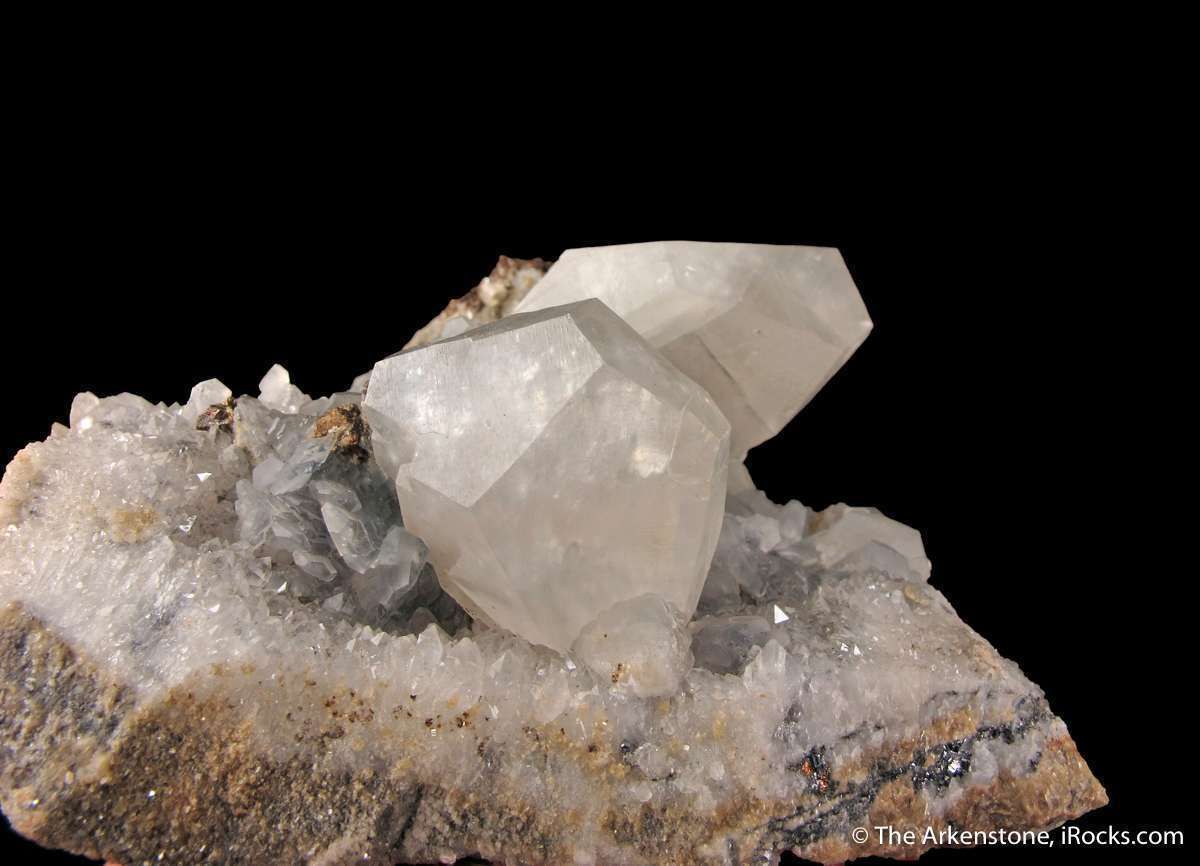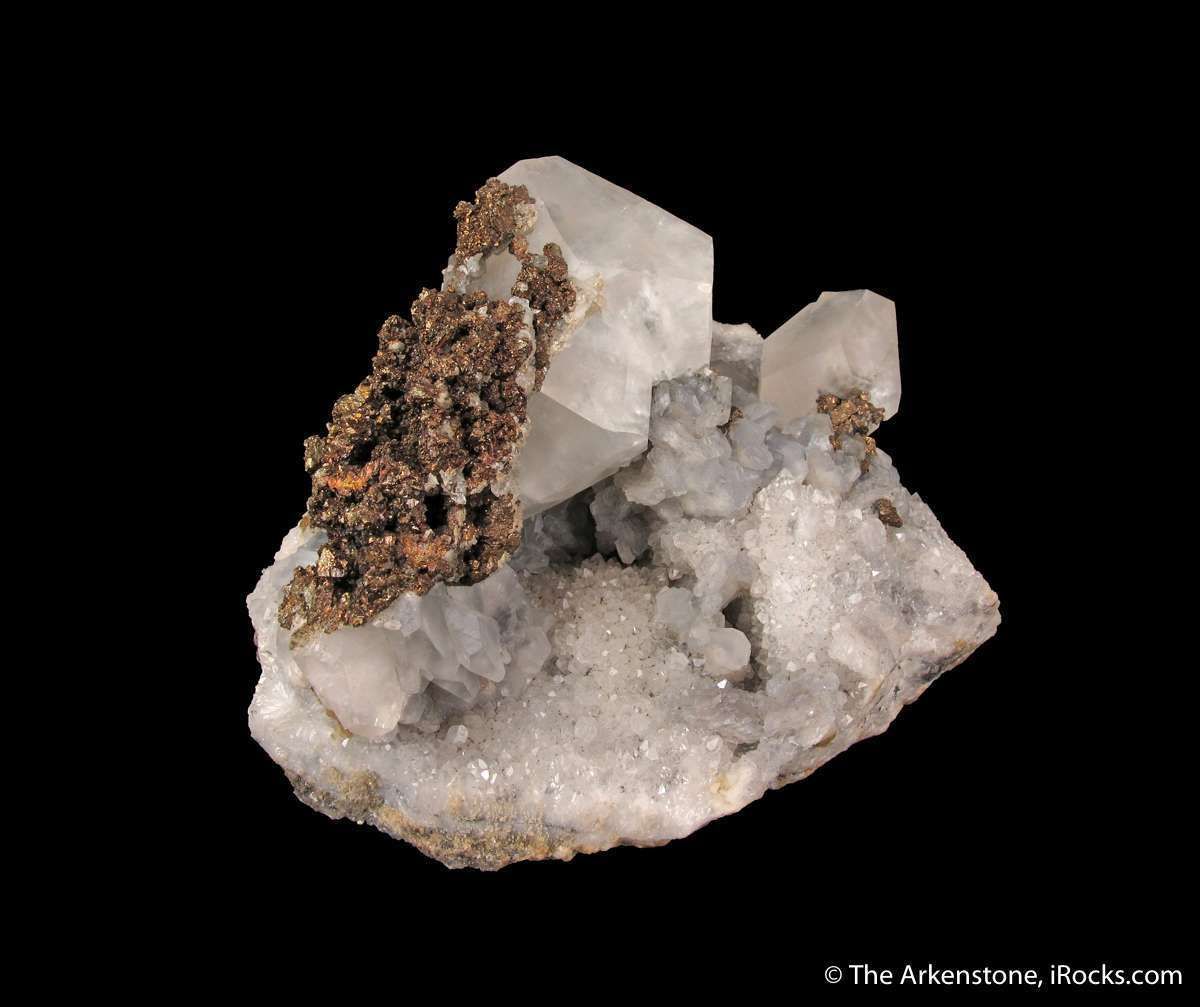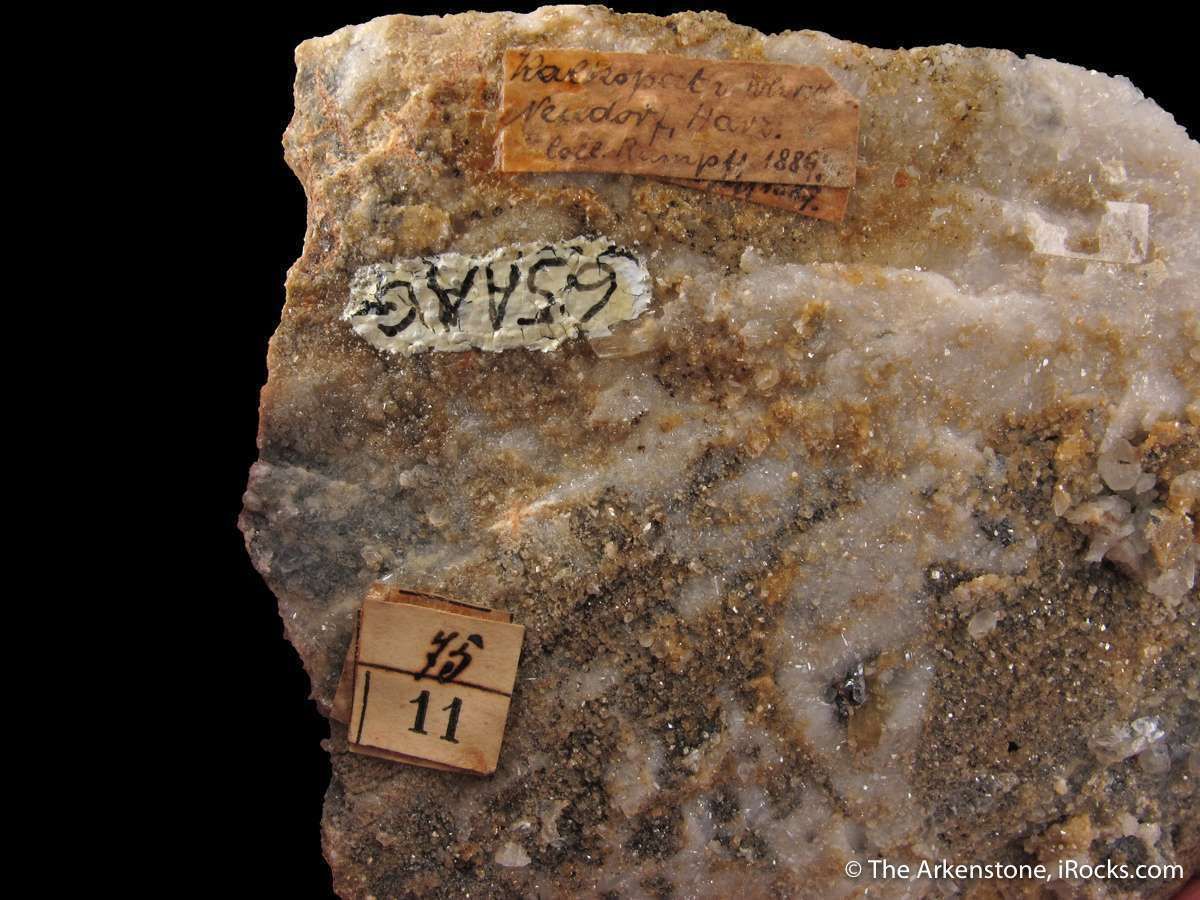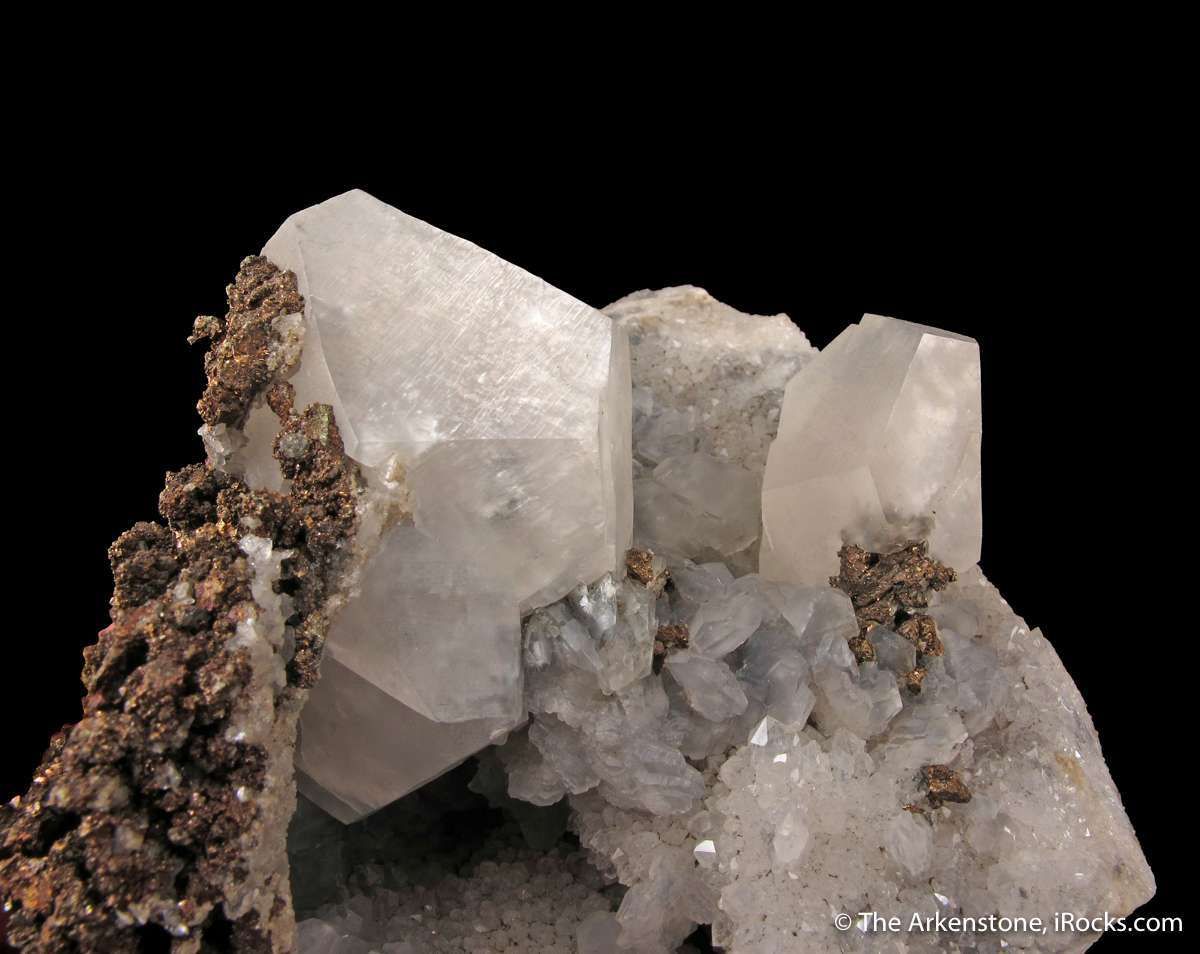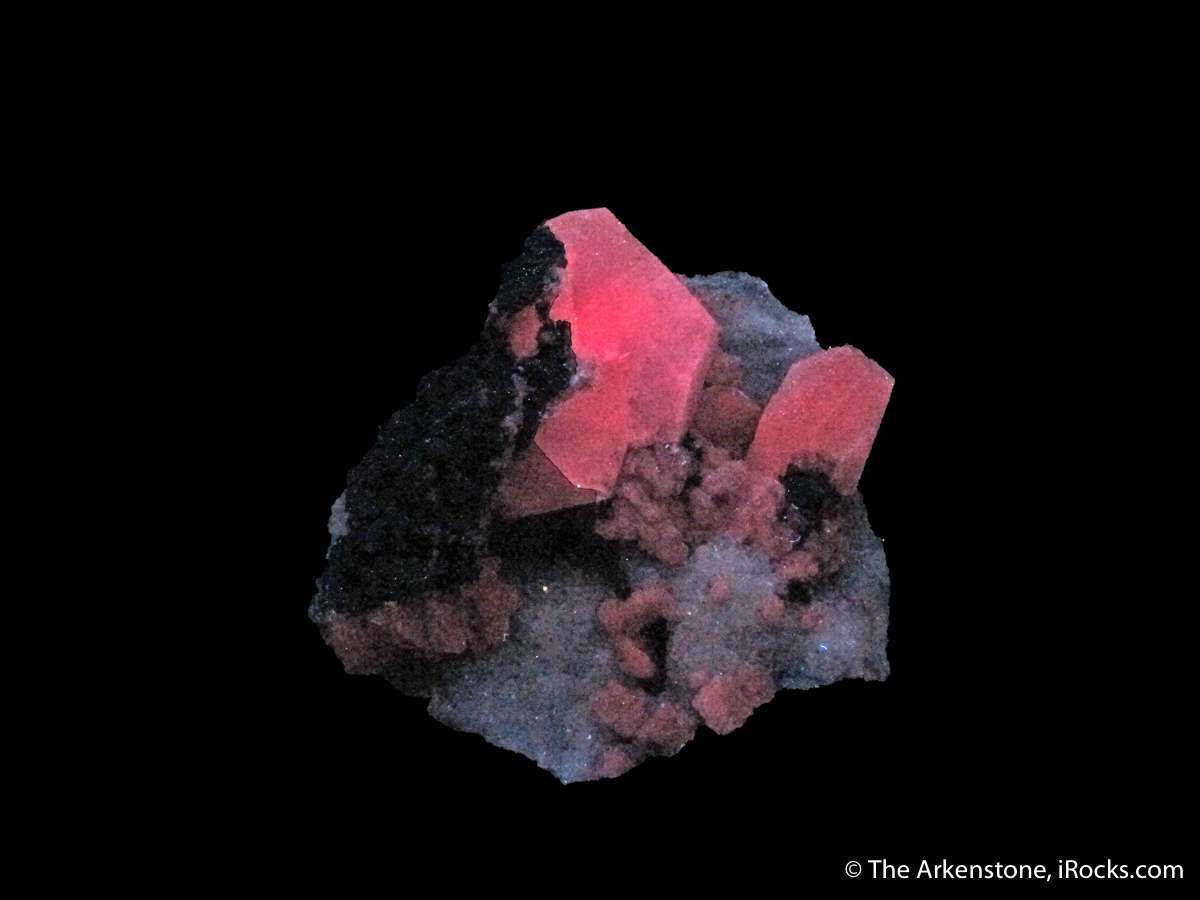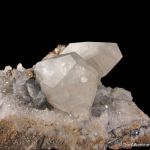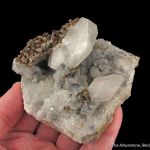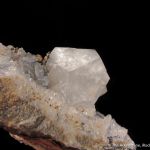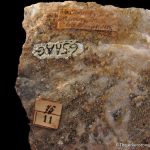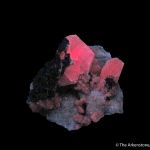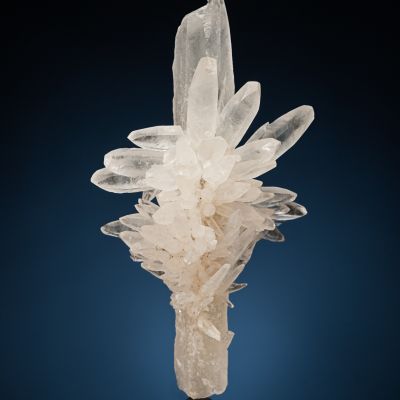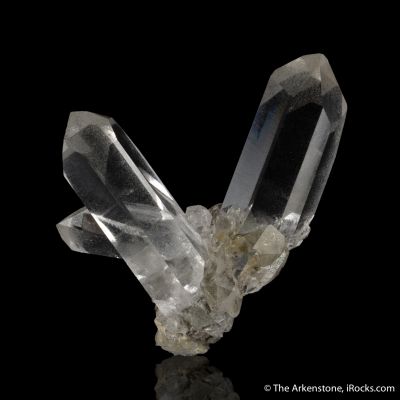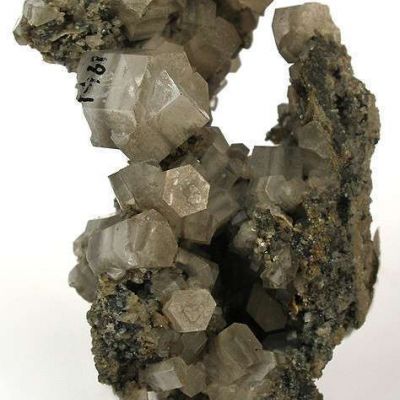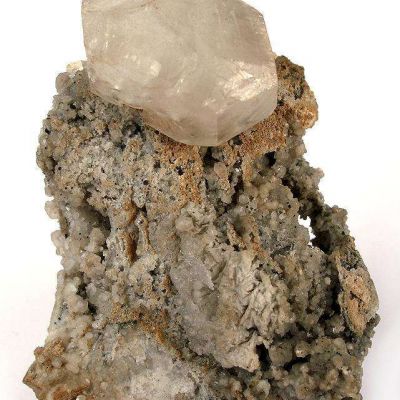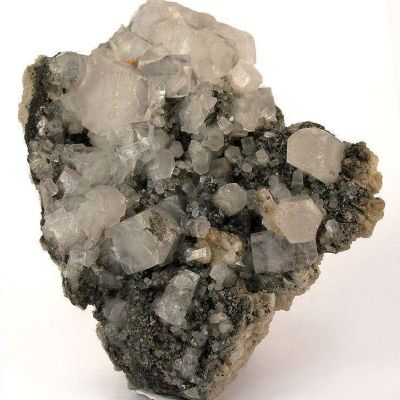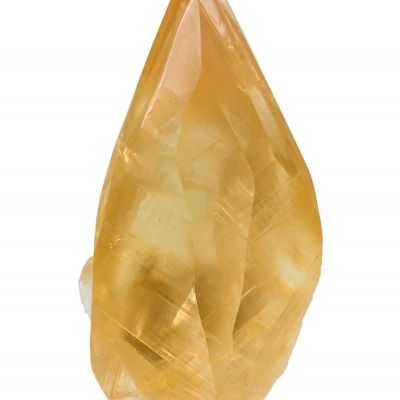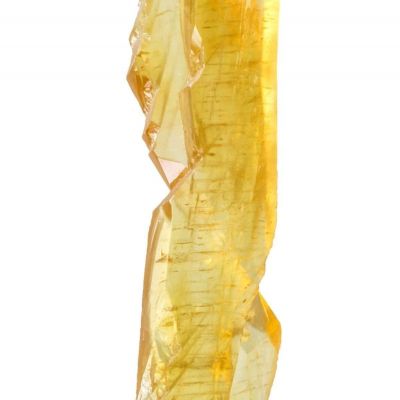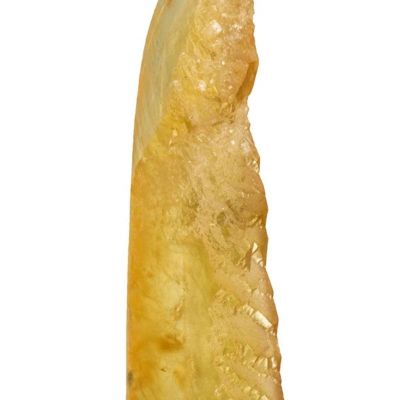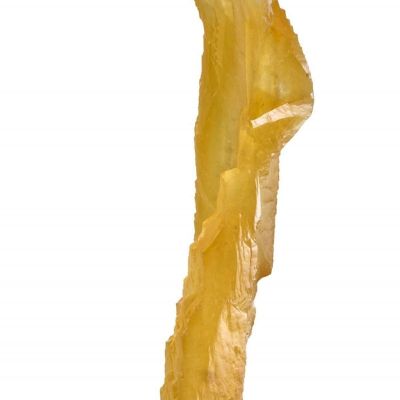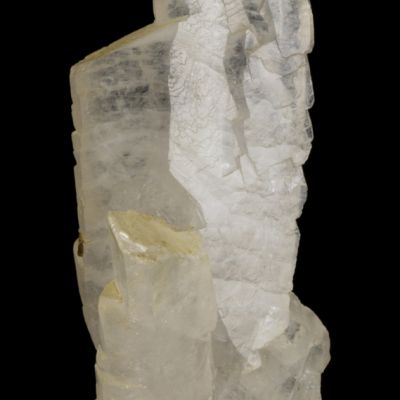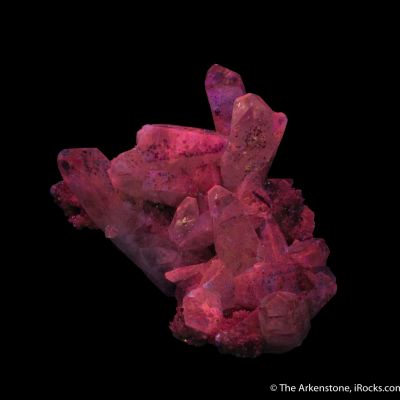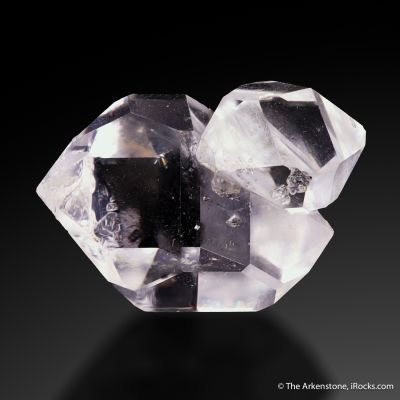- OB17A-69
- Calcite and Chalcopyrite, on Quartz
- Neudorf, Harzgerode, Harz, Saxony-Anhalt, Germany
- Small Cabinet, 8.5 x 7.3 x 4.8 cm
- Ex. Prince Stephan von Habsburg-Lothringen; Carl Rumpff; Herb Obodda
- SOLD
Calcite and Quartz specimens are extremely rare from the famous mines at Neudorf (renowned for world-class Galena and Siderite specimens while calcite was quite rarely seen or preserved), and adding Chalcopyrite to the mix makes this even more unusual. Two upright, frosted, translucent, "nail-head" Calcite crystals to 4.5 cm are aesthetically set on edge on a plate of Quartz crystals, and the Calcites are draped with varying amounts of lustrous Chalcopyrite crystals. It should be noted that the back portion of the largest Calcite was cleaved, but it has absolutely no effect whatsoever on the most aesthetic presentation view. Of very great importance, this small cabinet piece is out of the historically famous collections of Archduke Stephan and Carl Rumpff. An outstanding, old, and rare combination specimen from this historic locality, with superb provenance. The Calcites have an orange fluorescence, which is like the icing on the cake for this small cabinet specimen. On the back are glued parchment labels for the Archduke and Rumpff and also a painted white collection label number from the late Dr. Ed David, from his first collection (sold in 1993). Almost as important as the calcite, is its label: Accompanying the specimen is the coveted label of Archduke Stephan Hapsburg of Austria, which dates this specimen to no later than mid-19th century. He was a major player in the mineral market of the early 1800s in Europe. Archduke Stephan died on February 19, 1867 and his collection was eventually bought by the German industrialist Frederick Rumpff in 1889 (http://minrec.org/labels.asp?colid=596). Interestingly, the mineral Stephanite is named in his honor. The collection then made its way into a German museum (the Humboldt) from which many specimens "leaked out" in the 1960s-1980s.
